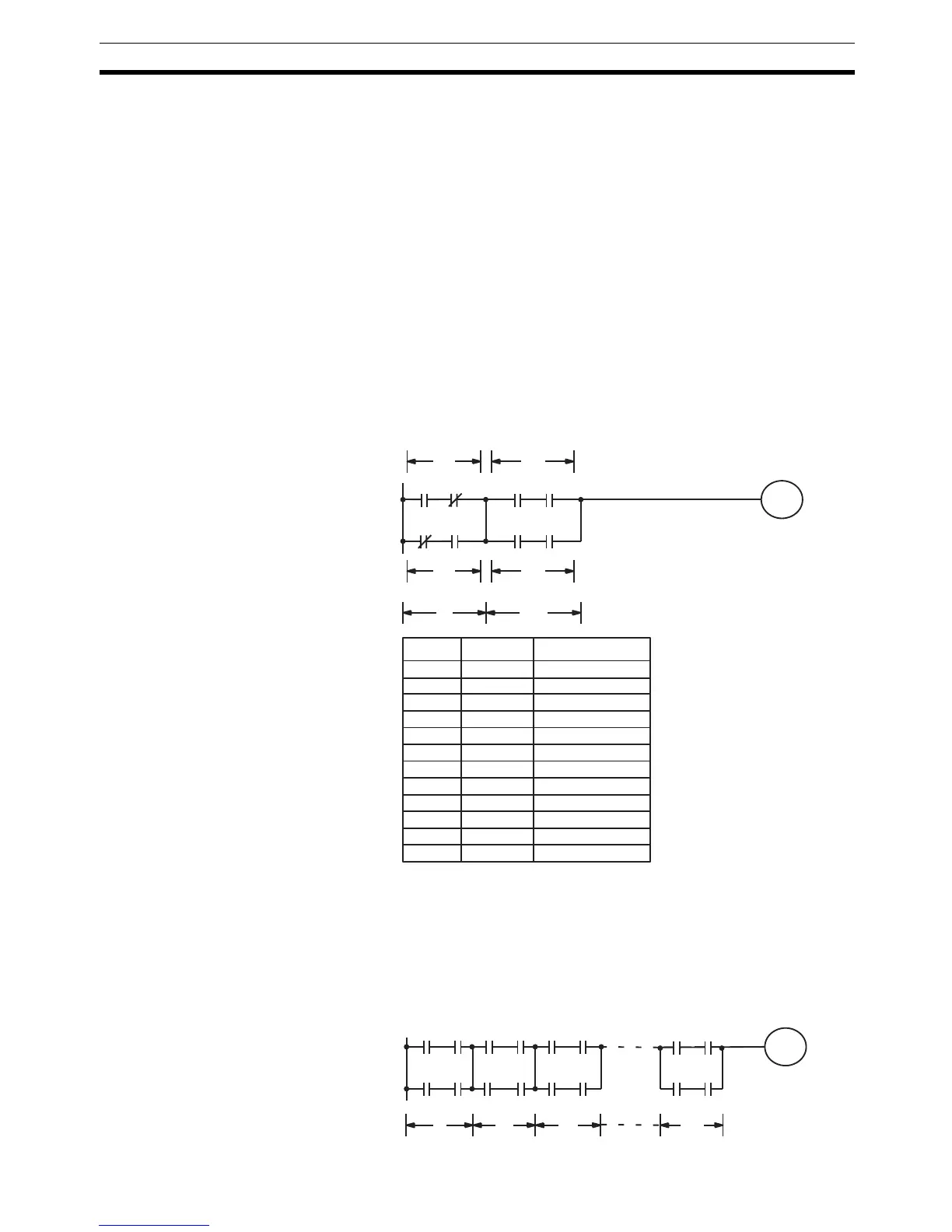191
Basic Ladder Diagrams Section 4-3
Complicated Diagrams When determining what logic block instructions will be required to code a dia-
gram, it is sometimes necessary to break the diagram into large blocks and
then continue breaking the large blocks down until logic blocks that can be
coded without logic block instructions have been formed. These blocks are
then coded, combining the small blocks first, and then combining the larger
blocks. Either AND LOAD or OR LOAD is used to combine the blocks, i.e.,
AND LOAD or OR LOAD always combines the last two execution conditions
that existed, regardless of whether the execution conditions resulted from a
single condition, from logic blocks, or from previous logic block instructions.
When working with complicated diagrams, blocks will ultimately be coded
starting at the top left and moving down before moving across. This will gener-
ally mean that, when there might be a choice, OR LOAD will be coded before
AND LOAD.
The following diagram must be broken down into two blocks and each of
these then broken into two blocks before it can be coded. As shown below,
blocks a and b require an AND LOAD. Before AND LOAD can be used, how-
ever, OR LOAD must be used to combine the top and bottom blocks on both
sides, i.e., to combine a1 and a2; b1 and b2.
The following type of diagram can be coded easily if each block is coded in
order: first top to bottom and then left to right. In the following diagram, blocks
a and b would be combined using AND LOAD as shown above, and then
block c would be coded and a second AND LOAD would be used to combine
it with the execution condition from the first AND LOAD. Then block d would
be coded, a third AND LOAD would be used to combine the execution condi-
tion from block d with the execution condition from the second AND LOAD,
and so on through to block n.
00000 00001 00004 00005
10003
Block
a
Block
b
00006 00007
Block
b2
Block
b1
00002 00003
Block
a2
Block
a1
Blocks a1 and a2
Blocks b1 and b2
Blocks a and b
Address Instruction Operands
00000 LD 00000
00001 AND NOT 00001
00002 LD NOT 00002
00003 AND 00003
00004 OR LD
00005 LD 00004
00006 AND 00005
00007 LD 00006
00008 AND 00007
00009 OR LD
00010 AND LD
00011 OUT 10003
Block
a
Block
b
10000
Block
n
Block
c
